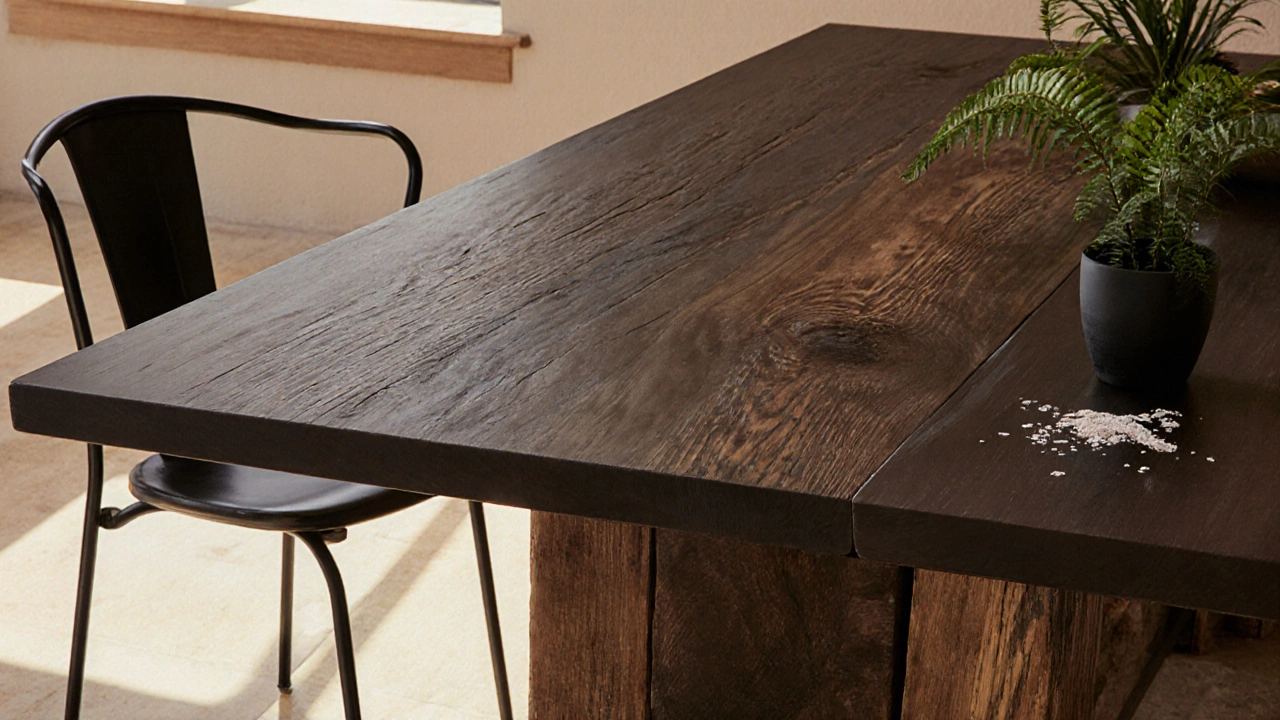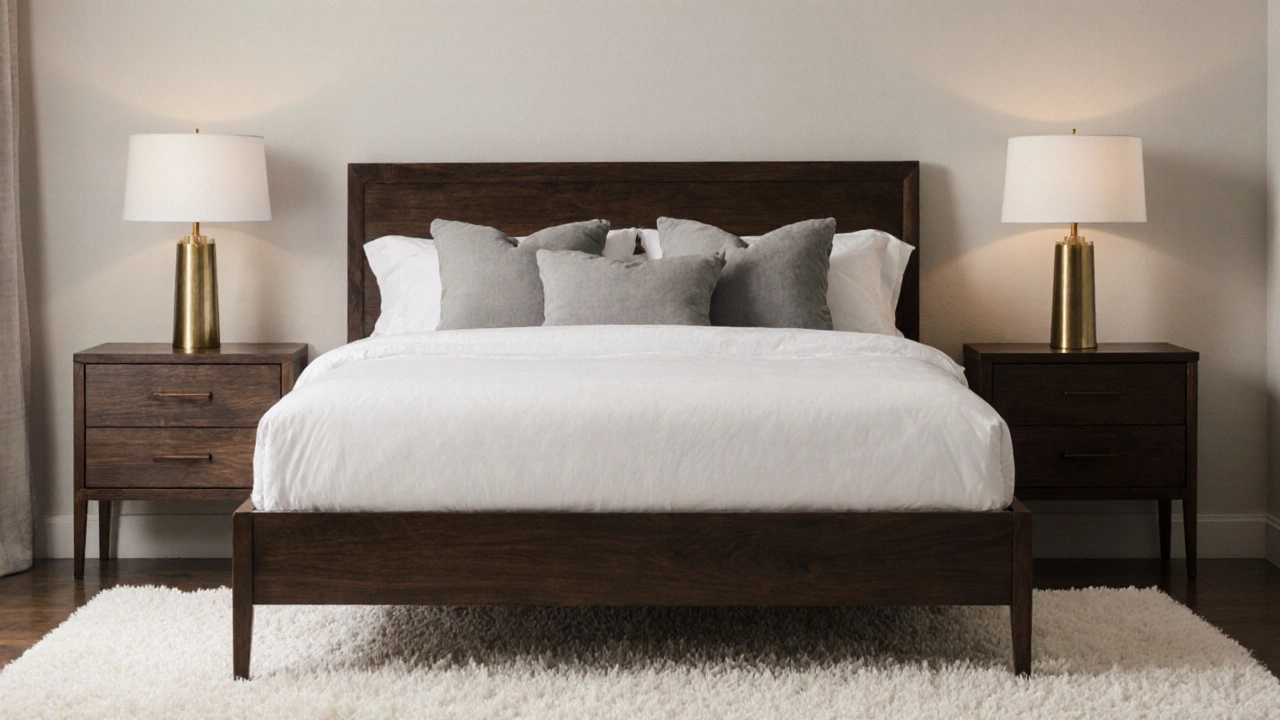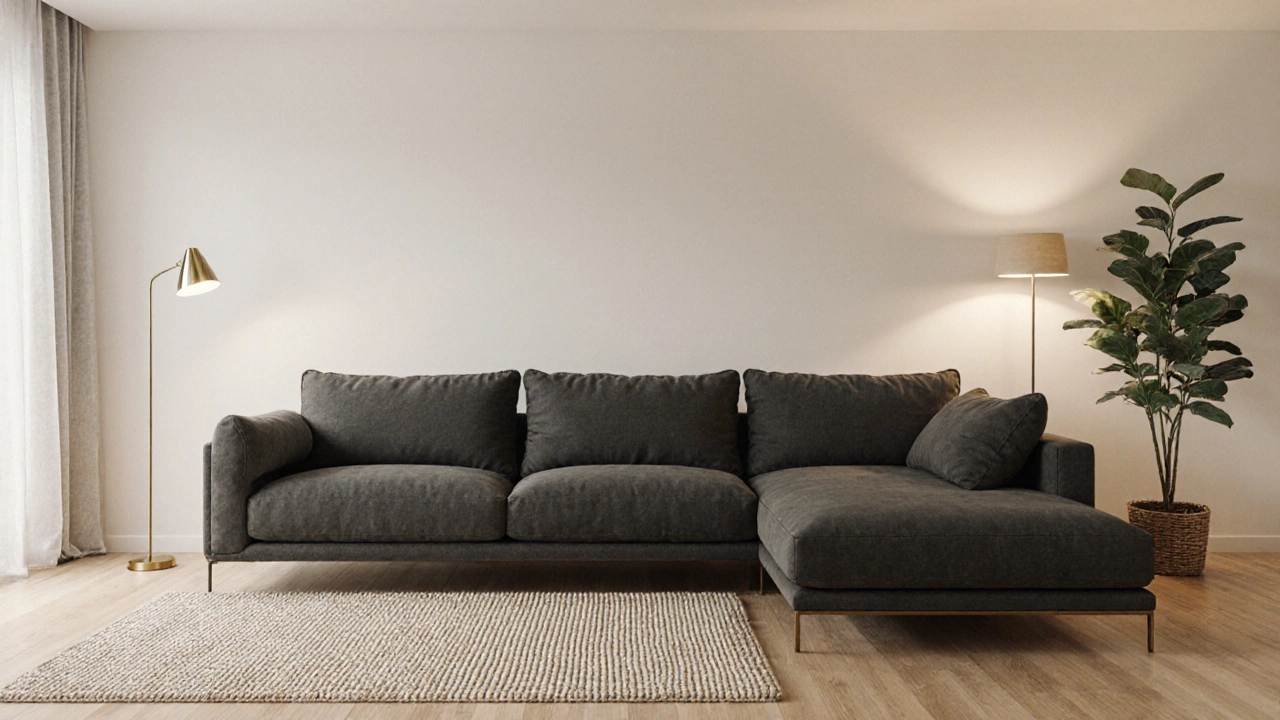Dark Furniture Balance Calculator
Optimal Dark Furniture Balance
Calculate if your room has the right balance of dark furniture for 2024 trends. We recommend keeping dark furniture under 40% of the room's visual space.
Balance Assessment
Key Takeaways
- Dark furniture is set to surge in 2024, driven by sustainability and a craving for contrast.
- Choose matte or low‑sheen finishes to keep the look sophisticated, not heavy.
- Pair dark pieces with ample lighting, natural textures, and light‑toned walls for balance.
- Start small - a dark sofa or dining table - before committing to an all‑dark room.
- Watch for the hybrid trend: dark frames with lighter upholstery for flexible styling.
When we talk about dark furniture is a style that features deep hues such as charcoal, espresso, navy, or deep forest green across sofas, chairs, tables and storage pieces, we’re really looking at a shift away from the pastel‑centric decade of the 2010s. Designers are swapping bright whites for richer palettes because they want a room that feels grounded yet modern. If you’ve been scrolling Instagram, you’ve probably noticed the rise of moody interiors - that’s not a coincidence.
What’s fueling the dark furniture comeback in 2024?
Three big forces are pushing this trend forward:
- Sustainability credentials. Dark finishes often use natural pigments and low‑VOC stains, which appeal to eco‑conscious buyers.
- Visual contrast. After years of minimalism, homeowners crave depth. A dark sofa against a light wall creates an instant focal point.
- Technology‑enabled manufacturing. New low‑odor, water‑based inks let factories produce matte black or deep‑blue finishes without the harsh chemicals of the past.
These drivers intersect with broader interior design trends that prioritize texture, biophilic elements, and mixed‑material palettes.
How dark furniture plays out in different rooms
Living rooms benefit from a dark sectional or coffee table that anchors the space. Pair it with a light‑colored rug and plenty of floor lamps to keep the room from feeling cave‑like.
Bedrooms can embrace a dark headboard for a hotel‑like vibe. Keep the bedding in crisp whites or soft greys - the contrast feels luxurious.
Dining areas often see a dark wood or lacquered table. It adds drama to meals and shows off dishes beautifully.
Home offices are seeing dark desks paired with ergonomic chairs in muted tones. The dark surface reduces glare on screens.

Lighting and color palette: the balancing act
Lighting is the secret weapon that prevents a dark room from slipping into gloom. Use layered lighting - ambient ceiling fixtures, task lamps, and accent LEDs - to highlight the furniture’s texture.
When it comes to the surrounding color palette, stick to light neutrals (off‑white, pale taupe) or nature‑inspired hues (sage, warm sand). A splash of metallic - brass or brushed gold - adds a modern edge without competing with the furniture’s depth.
Materials and finishes that make dark furniture work
Not all dark pieces are created equal. Here are the most successful options for 2024:
- Matte lacquered wood: Gives a sleek, contemporary look while hiding fingerprints.
- Powder‑coated metal: Ideal for industrial‑style chairs and bed frames.
- Upholstery in muted fabrics: Charcoal linen or deep‑blue velvet adds softness without brightening the room.
- Reclaimed timber: Dark stains enhance the material’s natural grain, supporting the sustainability narrative.
These materials align well with the finish preferences of modern buyers - low‑sheen, tactile, and durable.
Avoiding the common pitfalls
Going all‑dark can backfire if you ignore a few basics:
- \*\*Over‑darkening\*\*: A completely black room feels smaller. Keep at least 30% of the visual field in lighter tones.
- \*\*Maintenance\*\*: Dark surfaces show dust more readily. Choose matte finishes that hide smudges, and schedule regular cleaning.
- \*\*Clashing styles\*\*: Pairing dark mid‑century modern pieces with ornate Victorian décor creates visual chaos. Stick to a unified style narrative.

Step‑by‑step guide to introducing dark furniture
- Identify the focal point: a sofa, dining table, or bedroom headboard.
- Choose a complementary finish - matte wood for warmth or powder‑coated metal for a sleek vibe.
- Audit existing lighting. Add floor lamps or wall sconces if the room feels dim.
- Introduce texture: a woven rug, natural fiber throws, or a leafy plant to soften the darkness.
- Finish with accessories in metallics or pastel tones to keep the palette balanced.
This checklist helps you move from “I love dark furniture” to a well‑curated space that feels intentional.
Dark vs. Light Furniture: Quick Comparison
| Aspect | Dark Furniture | Light Furniture |
|---|---|---|
| Visual Impact | Creates strong focal points, adds drama | Enlarges space, feels airy |
| Maintenance | Shows dust, fingerprints; matte finishes help | Stains more visible, but easier to wipe clean |
| Trend Longevity | Rising in 2024, backed by sustainability narratives | Classic, but risk of looking dated if over‑used |
| Styling Flexibility | Pairs well with bold accents, metallics | Works with most color schemes, easier for beginners |
| Cost | Often premium due to specialized finishes | Generally more budget‑friendly |
Frequently Asked Questions
Will dark furniture make my small apartment feel cramped?
If you balance dark pieces with plenty of light walls, mirrors, and layered lighting, the space can actually feel more intentional rather than cramped. Stick to one or two dark anchor items and keep the rest light.
What finishes are easiest to maintain for dark furniture?
Matte lacquer, low‑sheen oil‑based stains, and powder‑coated metal are the most forgiving. They hide fingerprints and dust better than high‑gloss finishes.
Can I mix dark furniture with a Scandinavian interior?
Absolutely. Scandinavian design already embraces natural wood tones. A dark walnut dining table or a charcoal sofa adds depth while staying true to the clean lines of the style.
Is dark furniture a sustainable choice?
Many dark finishes now use water‑based, low‑VOC pigments and reclaimed wood, which lower the environmental impact. Look for certifications like FSC or GREENGUARD.
Should I repaint my walls before adding dark furniture?
A light neutral wall (off‑white, soft greige) offers the best contrast. If you love color, consider a muted pastel accent wall rather than a full dark wash.
